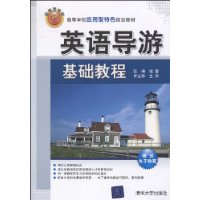本书以导游基础考试大纲中的基本考点为基础,结合具体实践教学过程巾的操作经验,依据对高等院校英语专业和旅游专业学生的培养目标、知识结构和实际应用能力的要求,系统地介绍了中国的历史地理、民风民俗、风物特产、自然与人文景观、古代遗址遗迹、古代建筑设施和宗教信仰等内容。
本书主要适用于旅游及英语相关专业的大中专在校学生或从业者,也可作为导游资格考试培训教材使用,同时也可供广大旅游及英语爱好者参考。
插图:

According to the World Tourist Organization (WTO), tourists are those who travel and stayin places outside their usual environment for no more than one consecutive year for leisure,business and other purposes unrelated to the exercise of an activity remunerated from or withinthe place visited. Mathieson and Wall (1982) initiated a good working definition of tourism as"the temporary movement of people to destinations outside their normal places of work andresidence, the activities undertaken during their stay in those destinations, and the facilitiescreated to cater to their needs."
As a matter of fact, tourist activities can be dated back to the end of the primitive society,when people began to go outing for the exchanges of products or goods, besides those whomigrated for livings. With the appearance of private property, people traveled for business. In thefeudal society, tourist activities developed rapidly and expanded in a large scale, such as "theGrand Tour" (It was the traditional travel in Europe mainly by upper-class young people from the1660s to 1840s), emperors' or nobles' tours, tours of men of letters, and pilgrimages. Strictlyspeaking, these activities, however, were not travels because business was the main purposeinstead of leisure. In the 19th century, the Industrial Revolution accelerated the development ofsociety, economy, and science and technology; especially locomotives were invented, whichmade it possible to travel in a large number or scale. In 1845, Thomas Cook initiated to establishthe first travel agency in the world, which officially marked the beginning of tourism industry inmodem times. Since then, mass travel took on a new phase because of free time, paid vacation,personal disposable income and the development of tourism resources.


